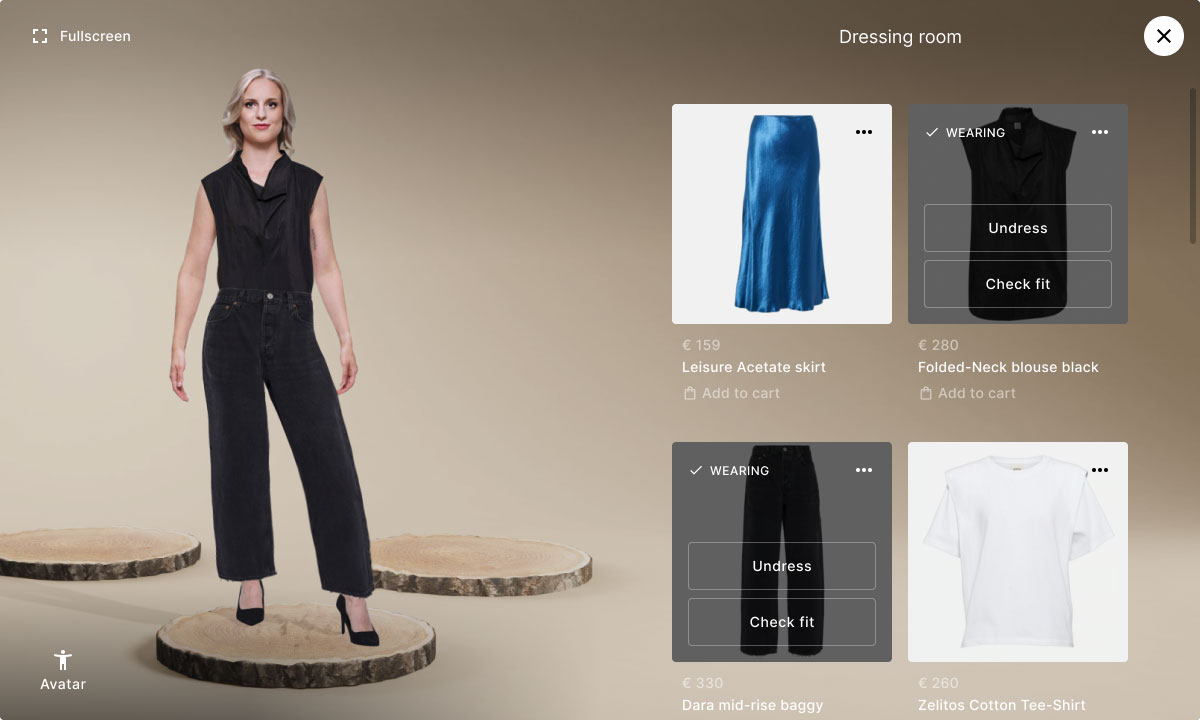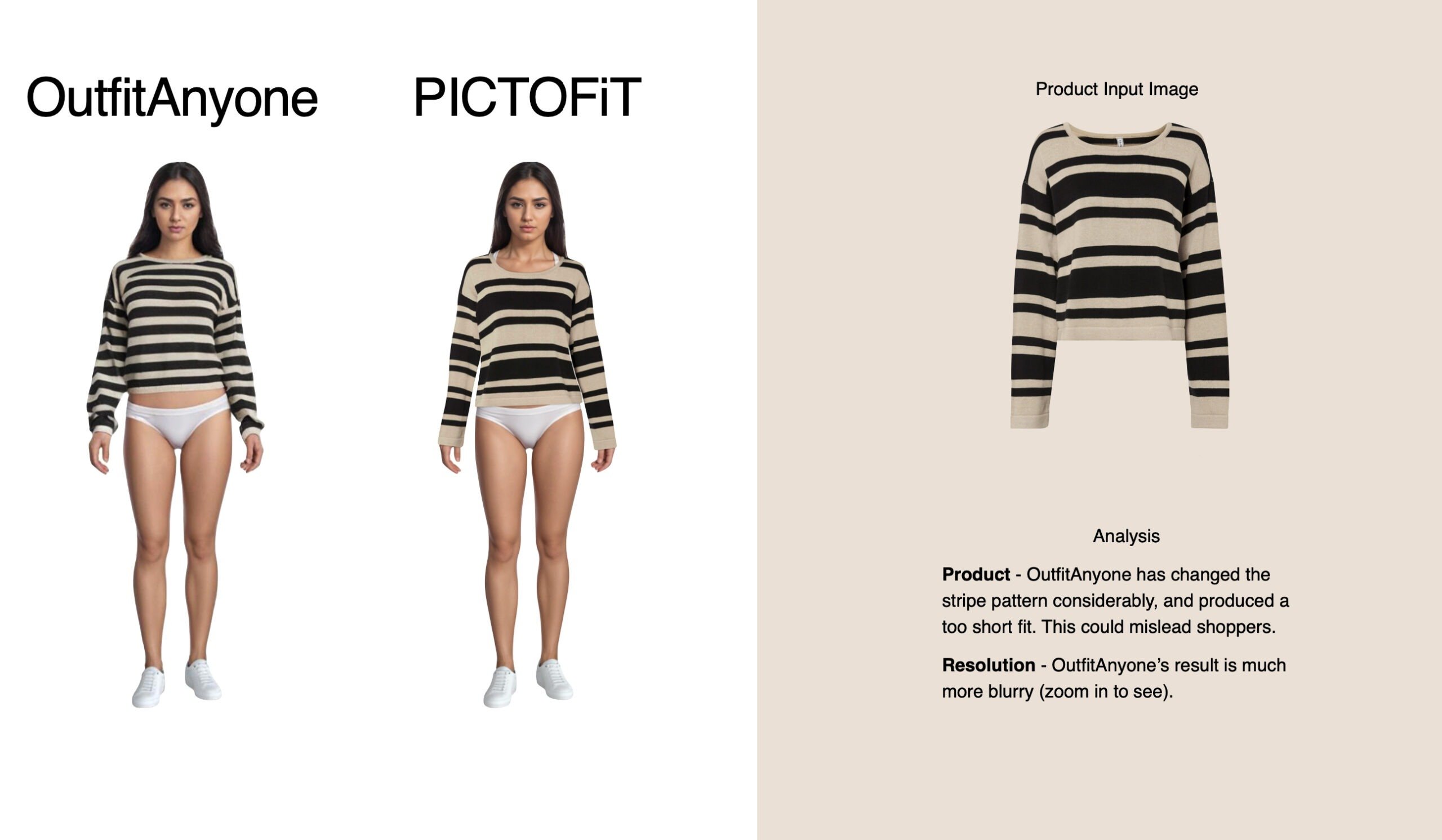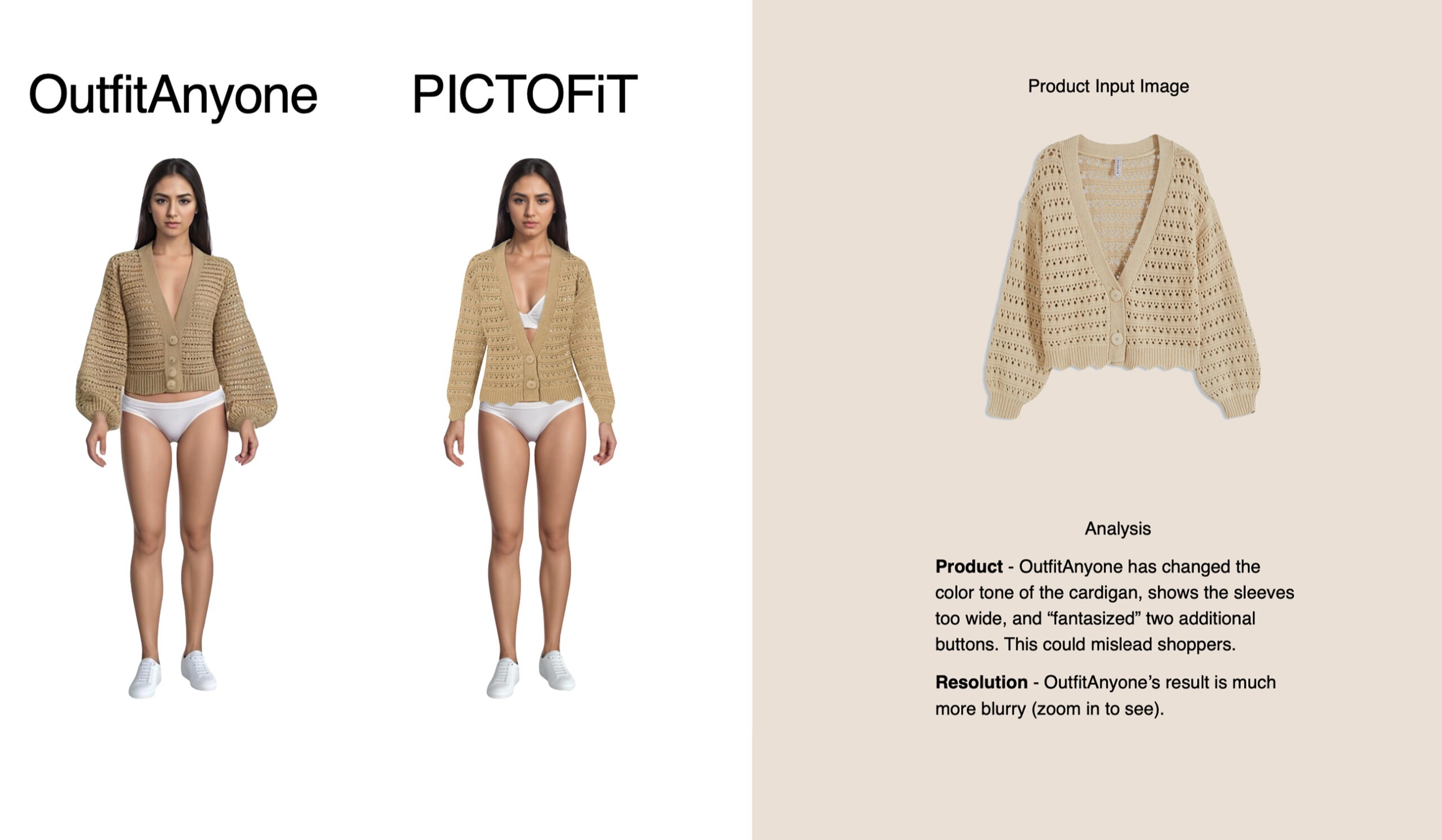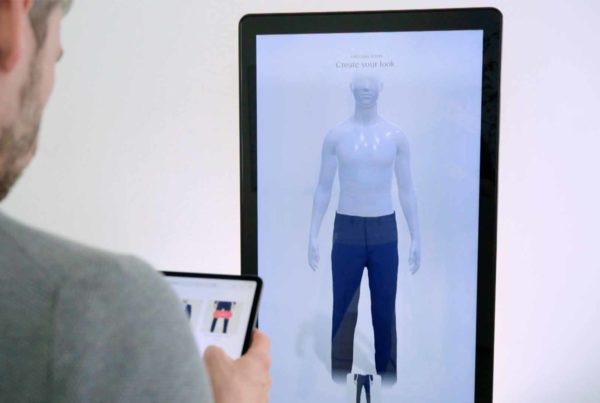The landscape of online fashion retail is rapidly evolving, driven by advancements in virtual try-on technologies. These technologies enhance the online shopping experience by allowing consumers to visualize how clothing items will look on them before making a purchase. Among the leading solutions are OutfitAnyone and PICTOFiT, each offering unique capabilities and features.
Here we provide a comparative analysis of these two virtual try-on technologies, highlighting key differentiators and their impact on the online shopping experience. While OutfitAnyone offers basic functionalities common to many AI-powered tools, it suffers from significant limitations that can mislead consumers and detract from their shopping satisfaction. In contrast, PICTOFiT delivers higher resolution, advanced user experience features, and a personalized approach.
Quality Comparison
User Experience
OutfitAnyone is limited to static 2D images, offering no added value beyond regular fashion photos. In contrast, PICTOFiT provides a dynamic and interactive experience, enabling users to
- mix and match outfits with multiple garments,
- explore various styling options including layering and tucking in or out, and
- control viewing angles with full 3D and interactive backgrounds.
Further, PICTOFiT offers personalized avatars that reflect the user’s body shape and appearance, along with precise size recommendations, significantly enhancing the virtual try-on experience.

Risk & Data Security
Using OutfitAnyone in live systems makes retailers heavily dependent on Alibaba, a Chinese company that does not share its technology with competitors. Additionally, Alibaba stores and analyzes all provided data, potentially compromising sensitive user data and violating GDPR protections.
In contrast, PICTOFiT operates within the EU and uses Microsoft’s Azure solution, ensuring compliance with the latest legal and technical best practices. PICTOFiT encrypts all data in transit and at rest, ensuring customer data security with state-of-the-art IT policies. Personally identifiable information is only required for specific features, and on-premise data storage and processing are available.



















